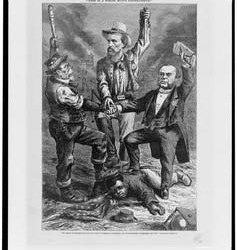#Clay cortez icons
Text









Weapon H (Clayton Cortez) - Icons
Don't repost, that's not cool.
Like or Reblog if u Save.
#Clay cortez icons#Hulkverine icons#Weapon H icons#Clayton cortez icons#Hulk icons#Comics icons#Comics edits#Icons#Icons with psd#Marvel icons#Marvel comics#Marvel edits#Hulkverine#Weapon H#Clayton cortez#Hulks
21 notes
·
View notes
Link
Early this month, Cori Bush was defeated in the St. Louis MO congressional primary, by Congressman Lacy Clay. Clay has held the seat since inheriting it from his father in 2001, and his father had it for 32 years. That’s 50 years of a congressman named Clay. Missouri’s first district includes Ferguson, an inner suburb of St. Louis. When four summers ago we saw a handful of public officials in the streets trying to chill out Ferguson protesters, there was a black congressman among them. But that was Emanuel Cleaver, from Kansas City, not the black face who’s family by then had repped the district a good 45 years.
Challenger Cori Bush lost no opportunities to remind people that Clay was AWOL during the entire Ferguson episode, but it was not enough. Bush campaigned on free college, not accepting corporate money, raising the minimum wage, restraining killer cops, more money for public education and Medicare For All, but that wasn’t enough either. She had a great personal story too, a single mother who earned a nursing degree, and spent a while living out of her car. Bush won the backing of Justice Democrats, a national outfit that had quite a lot to do with the mechanics of the Alexandra Ocasio-Cortez campaign in the Bronx a few weeks before. Unlike Ocasio-Cortez, Bush is not a member of Democratic Socialists of America , and has never identified herself as a socialist.
So how exactly did she lose? Nobody else seems willing to offer explanations, beyond shallow wisdom that “St. Louis MO ain’t da Bronx.” The folks who had a thousand good reasons Ocasio-Cortez was the front end of a blue wave have passed on explaining why this blue wave missed in Missouri.
The first thing to see is the obvious, that St. Louis really is NOT the Bronx. Ocasio-Cortez was a working class Puerto Rican woman in a largely Latino district, and her opponent was a 20 year incumbent white guy who was obviously ready to leave for a more lucrative career as a lobbyist. Lacy Clay on the other hand, really wanted to keep that St Louis congressional seat. In 2016 he faced another black woman who’d been tear gassed in the streets of Ferguson, state rep Nadya Chappelle-Nadal, who got 24 thousand votes to Clay’s 56 thousand. So unlike Crowley in the Bronx, Clay didn’t sleep the 2018 race, he ran up 81 thousand votes to Bush’s 53 thousand.
Another dimension in which St. Louis is not New York is voter turnout. New York Republicans and Democrats have deliberately engineered primary elections for low turnout, requiring votes to register as Democrats many months prior to election day just to be eligible. But in Missouri you show up and ask for the Democrat ballot. So Alexandra Ocasio-Cortez’s 57% of the vote was just under 17 thousand. But Clay’s 57% share in Missouri was 81 thousand, again to Bush’s 53 thousand. Ocasio-Cortez said it took 120,000 phone calls to get that. I don’t know yet how many calls Bush needed to get her 53 thousand but I’ll be asking.
We have to look at the national organizations which backed Ocasio-Cortez, Bush and the rest of this blue wave which is supposed to swamp Congress and state legislatures in 2018. There are at least 3 organizations which help raise money, funnel experienced campaign help, do social media, recruit national phone and text banking assists and more. Those would be Our Revolution, Brand New Congress and Justice Democrats. Brand New Congress claims to have “recruited” Ocasio-Cortez, who was previously one of those in charge of Bernie Sanders’ New York effort. A leader of Justice Democrats served as Cori Bush’s communications director, and both outfits named Bush, who’d run statewide in Missouri for US Senator in 2016, as one of their own. Unlike Ocasio-Cortez Cori Bush has never been a DSA member either, and has never called herself a socialist.
What Brand New Congress, Our Revolution, and Justice Democrats have in common are three things.
The first is a common commitment to taking over or rescuing the Democratic party.
The second is a real reluctance to make any but the sketchiest reference to anything that takes place outside the US – as if the US didn’t have troops in a hundred foreign countries, at least 800 bases in a hundred countries and a trillion dollar military budget supported by most of the Democrats in Congress. Justice Democrats has a statement at the end of their foreign policy that seems to put the military budget around $100 billion instead of the actual trillion, which ten times that size. Cori Bush’s page is typical of the blue wave, it doesn’t mention anything on foreign policy or empire at all.
The most optimistic way to see this collective blind spot is that maybe the blue wave of Congressional candidates don’t want to incur the wrath of the DCCC, the Democratic Congressional Campaign Committee, which is running about 40 former CIA, Homeland Security, State Department, local police and military types for Congress this year, and has plenty money for last minute negative media offensives against would be peacenik congressional candidates in places where they don’t even have candidates.
The least optimistic view is that sketchy or absent references to US empire and foreign policy are how the blue wave candidates signal their willingness to adopt the imperial consensus if they are lucky enough to get elected. After all four fifths of the Congressional Black Caucus and just over half the House Progressive Caucus just voted for Trump’s record military 2019 military budget.
The third thing they all have in common is that few or none have distanced themselves from the drumbeat of RussiaGate, the nonsense that holds Russia responsible for Trump’s victory in 2016, that posits a credible ongoing Russian plot to steal the US elections. To our knowledge none of the blue wave candidates nor the national outfits which back them have stood apart from themselves tendency to label anybody to their left stooges of Russia either.
Bringing it back to St. Louis, Cori Bush had to face something Ocasio-Cortez didn’t. It was something her blue wave backers hadn’t dealt with either. It was the peculiarities of black politics in the US. The 1st CD Missouri is 50% black and there are some unique and well established characteristics of the Democratic party in districts like that, whether they’re in Chicago or Philly or Dallas or Atlanta or wherever.
The first is the black church, which is ridden with local, and since the advent of Bush’s and Obama’s faith based initiative, federal patronage. Black churches are often tied hand and foot to local politicians for everything from real estate deals to charter school contracts, and their leaders are often fixtures in local Democratic party affairs, even public officials themselves. The second is the nonprofit industrial complex, a literal army of advocacy groups sometimes doing housing and homeless activism, sometimes feeding the hungry, sometimes doing worker centers, womens health, tenants rights, LBGTQ activism, environmental stuff. There’s another section of the nonprofit industrial complex which can’t even be called nonpartisan with a straight face, offshoots of the NAACP and the Movement 4 Black Lives. These forces are tied to the political preferences of their corporate philanthropic funders. Executive directors of nonprofit organizations who don’t find a way to support the right Democrats in primary season and all Democrats in general election put their careers, the livelihoods of all their employees, and the outfit’s good works in jeopardy. And there are the unions – heavily public sector and disproportionately people of color, again all tied to the most right wing established Democrats on the local, state and federal level.
Unlike the troops the blue wave outfits can raise once every two years, these things are permanent institutions in black communities. Remember when Atlanta civil rights icon John Lewis stood up in Ebenezer Baptist Church to tell young black folks that free college tuition and free medical care were un-American and the crowd was with him? That’s the complex of forces against which relatively leftist electoral candidates in black communities must run. In old school political language that’s called a Machine, a standing bunch of political institutions which can put significant money into broadcast ads and mailings, speakers and preachers into pulpits, hundreds of bodies in the street and hundreds more the phone banks. Clay had them, and Bush did not. All Bush had was what she could raise on the issues.
The big blue wave outfits probably hadn’t done much work in black communities and didn’t know this. Maybe they were listening to DSA theoreticians like Adam Hiton who imagine the Democratic Party in such places has no real organization. But it’s organized, and it’s very, very real. If you’re going to knock out the right wing Democrats who dominate the electoral politics of black communities you have to do more than hire the right black consultants, although they and the Movement For Black Lives Electoral Justice Project will be glad to keep taking your money. Somebody has to build some other permanent organizations, some other centers of popular power in those communities. It hasn’t been done yet, and won’t be done before the 2018 midterm elections. That’s why Bernie didn’t crack the black vote in 2016, and that’s why the blue wave didn’t crash Missouri in 2018. It’ll be why the wave misses in other black constituencies.
these four orgs (DSA, Our Revolution, Justice Democrats, and Brand New Congress) form the main part of the “Bernie-electoral complex”. essentially, they offer to secure the consent of enthusiastic young workers with enough spare time to be electoral volunteers for the party in exchange for concessions from the Dem donor class, ie unions, lawyers, tech companies, non-profits, etc, on social welfare. thing is, most people in dire straits tend to go for the sure bet over any potential shift in electoral loyalties, which is why machine politics tend to go so well, at least until they don’t. they prefer to have the political patronage they know they already get, even if it’s very minimal, than to risk it on an unsure thing and watch it slip away.
17 notes
·
View notes
Text
A record number of women will serve in the 117th Congress, including at least 51 women of color
Jahana Hayes (left) and Lauren Underwood have been reelected to the Home of Representatives. AP Photograph/J. Scott Applewhite
Ladies will acquire at the least 14 seats within the 117th Congress, setting a brand new file for feminine illustration.
In 2018, the nation elected 127 ladies – and 48 ladies of colour – to the Home and Senate. Subsequent Jan. 3, at the least 141 ladies, together with 51 ladies of colour shall be sworn in. Eight races involving ladies had but to be referred to as as of Nov. 16, which means this quantity may nonetheless develop.
Ladies shall be at the least 27% of the Home and 24% of the Senate. The Senate numbers don’t embrace Vice President-elect Kamala Harris, or Kelly Loeffler, a Georgia Republican concerned in a runoff that may happen after Congress is sworn in. Ladies make up 50.52% of the U.S. inhabitants.
A powerful exhibiting by Republican ladies helped drive this development, with at the least 36 serving within the subsequent Congress, in comparison with 22 presently.
All through my 20-plus yr profession as a political science professor, I’ve studied ladies’s illustration in mayoral, congressional, gubernatorial and presidential elections.
Right here’s my have a look at the feminine demographics of Congress following the 2020 elections.
In it to win it
It’s typically mentioned that “When ladies run, ladies win,” and 2020 additionally noticed file numbers of girls operating in congressional elections.
In whole, 643 ladies have been candidates in congressional major elections, together with a file variety of Asian or Pacific Islander, Latina, Center Japanese or North African and Native American ladies.
Black ladies additionally set a brand new file in 2020 with 117 coming into primaries for the Home and 13 for the U.S. Senate, based on the Middle for American Ladies and Politics.
Holding onto good points
Lots of the ladies first elected to Congress in 2018 retained their seats.
All 4 members of “the Squad” have been reelected. These ladies – Ayanna Pressley, Ilhan Omar, Alexandria Ocasio-Cortez and Rashida Tlaib – are Democratic ladies of colour identified for his or her progressive insurance policies, together with the Inexperienced New Deal.
Additionally re-elected have been ladies first elected in 2018 like Illinois Democrat Lauren Underwood, winner in a predominantly white Republican district; Jahana Hayes, the primary Black girl to symbolize Connecticut; and Georgia’s Lucy McBath, Democratic winner in a district that had been held by Republicans for nearly 4 a long time.
These re-elections show that their victories in 2018’s “pink wave” weren’t a fluke and that they’ve actual endurance in Congress.
In some 2020 congressional races, African American ladies ran towards one another – an indication of their sturdy participation. For instance, Florida’s Val Demings, Florida’s Frederica Wilson and Georgia’s Nikema Williams – who will succeed the late civil rights icon John Lewis – gained their congressional races after defeating different Black ladies.

Activist Cori Bush will symbolize Missouri within the 117th Congress.
AP Photograph/Jeff Roberson, File
Notable newcomers
The freshman class within the Home of Representatives will embrace at the least 26 ladies serving their first time period.
Cori Bush, a Black Lives Matter activist, turned Missouri’s first Black congresswoman. She represents a district that features the cities of St. Louis and Ferguson, the positioning of the police killing of African American teenager Michael Brown in 2014. Ferguson additionally elected its first Black and first feminine mayor this yr.
Bush defeated African American U.S. Rep. William Lacy Clay. Clay and his father represented the district for over 50 years.
Different ladies of colour becoming a member of the Home for the primary time embrace former Telemundo journalist Maria Elvira Salazar, a Republican who unseated Donna Shalala in Florida, and lawyer Teresa Leger Fernandez, a Democrat from New Mexico.
Marilyn Strickland, the previous mayor of Tacoma, Washington, would be the first Korean American girl elected to Congress and the primary Black consultant from Washington State.
Some underdogs didn’t make it
So who misplaced?
Arkansas’ Joyce Elliott, a former trainer and veteran state legislator, got here up quick in her bid to turn into the primary African American congressional member from Arkansas.
Florida’s Pam Keith, a army veteran and lawyer, misplaced by a large margin to her Republican opponent.
Patricia Timmons-Goodson, the primary African American member of the North Carolina Supreme Court docket whose federal judicial nomination by Barack Obama was blocked by Republicans, didn’t win a seat in Congress.
Additionally developing quick was Tennessee’s Marquita Bradshaw, a single mom and environmental activist who would have been Tennessee’s first Black feminine congressional member if she had gained.
California’s Tamika Hamilton, Georgia’s Vivian Childs, Maryland’s Kimberly Klacik and Ohio’s Lavern Gore are all Republicans who ran in principally city Democratic districts, however none gained on election night time. All Black feminine congresswomen – except Utah’s Mia Love, who served two phrases within the Home – have been Democrats, suggesting that the trail to victory is very steep for Black Republican ladies.
Candace Valenzuela would have turn into the primary Afro Latina in Congress, however misplaced her race for Texas’ 24th congressional district to Republican Beth Van Duyne, a former Trump administration official.
Though they misplaced, their candidacies trace that extra ladies of colour will proceed to run for Congress as each Democrats and Republicans and could win subsequent time.
A white man’s authorities?

The caption of this 1868 cartoon learn, ‘This can be a white man’s authorities. We regard the Reconstruction Acts (so referred to as) of Congress as usurpations, and unconstitutional, revolutionary, and void – Democratic Platform.’
World Cat
For many of its historical past, the members of each Homes of Congress have been white males.
The monotony started to interrupt in 1916 when Montana’s Jeannette Rankin gained election as the primary feminine congresswoman. In 1964, Hawaii’s Patsy Mink turned the primary Asian American elected to congress. The primary Latina, Ileana Ros-Lehtinen of Florida, was elected in 1989.
In 1968, the late Shirley Chisholm turned the primary Black girl to serve in Congress. 4 years later, two extra Black ladies arrived in Congress, Barbara Jordan of Texas and Yvonne Brathwaite-Burke of California.
Chisholm referred to as Black ladies “catalysts for change” in politics. Rep Maxine Waters, a Democrat from California, as soon as tweeted, “I can’t be intimidated and I’m not going wherever.”
[Deep knowledge, daily. Sign up for The Conversation’s newsletter.]
Professor Kimberlé Crenshaw’s principle of intersectionality suggests Black ladies are discriminated towards due to the “intersection” of their racial, gender and sophistication identities. One result’s that they encounter disadvantages when operating for workplace.
Among the ladies I’ve talked about confronted disadvantages associated to their race, gender or class when operating towards well-funded incumbents. But, my work within the discipline of girls and politics additionally means that the lengthy custom of Black feminine political management in America is gaining momentum. Regardless of some ladies’s losses, their illustration has, and can proceed to, improve in Congress.

Sharon Austin doesn’t work for, seek the advice of, personal shares in or obtain funding from any firm or group that may profit from this text, and has disclosed no related affiliations past their educational appointment.
from Growth News https://growthnews.in/a-record-number-of-women-will-serve-in-the-117th-congress-including-at-least-51-women-of-color/
via https://growthnews.in
0 notes
Text
More women and more Black women than ever ran for Congress in 2020, but they still lost ground
Jahana Hayes (left) and Lauren Underwood had been reelected to the Home of Representatives. AP Picture/J. Scott Applewhite
In 2020, Black girls set a brand new document – 117 entered primaries for the Home and 13 for the U.S. Senate, in response to the Middle for American Girls and Politics.
In whole, 643 girls had been candidates in congressional major and basic elections, together with a document variety of Asian or Pacific Islander, Latina, Center Jap or North African and Native American girls.
Nonetheless, girls ended up dropping eight seats in Congress. In 2018, the nation elected 127 girls – and 48 girls of colour – to the Home and Senate. This 12 months, that dropped to 117 girls and 45 girls of colour.
All through my profession as a political science professor, I’ve studied girls’s illustration in mayoral, congressional, gubernatorial and presidential elections.
Right here’s my have a look at the feminine demographics of Congress following the 2020 elections.
Freshmen no extra
Most of the girls first elected to Congress in 2018 retained their seats.
All 4 members of “the Squad” had been reelected. These girls – Ayanna Pressley, Ilhan Omar, Alexandria Ocasio-Cortez and Rashida Tlaib – are Democratic girls of colour identified for his or her progressive insurance policies, together with the Inexperienced New Deal.
Additionally reelected had been Illinois Democrat Lauren Underwood, winner of a predominantly white and Republican district in 2018; Jahana Hayes, the primary Black lady to signify Connecticut; and Georgia’s Lucy McBath, winner in a district that had been held by Republicans for nearly 4 a long time.
These reelections show that their victories in 2018’s “pink wave” weren’t a fluke and that they’ve actual endurance in Congress.
In a few of the 2020 congressional races, Black girls ran towards one another – an indication of their sturdy participation. For instance, Florida’s Val Demings, Florida’s Frederica Wilson and Georgia’s Nikema Williams – who will succeed the late civil rights icon John Lewis – gained their congressional races after defeating different Black females.

Activist Cori Bush will signify Missouri within the 117th Congress.
AP Picture/Jeff Roberson, File
Notable newcomers
Some girls will likely be becoming a member of Congress for the primary time in January.
Cori Bush, a Black Lives Matter activist, grew to become Missouri’s first Black feminine congresswoman and represents a district that features the cities of St. Louis and Ferguson, the location of the police killing of African American teenager Michael Brown in 2014. Ferguson additionally elected its first Black feminine mayor this 12 months.
Bush defeated African American Congressman William Lacy Clay Jr.. Clay, Jr. and his father represented the district for over 50 years.
Different girls of colour becoming a member of Congress for the primary time embody Telemundo journalist Maria Elvira Salazar, a Republican who unseated Donna Shalala in Florida, and lawyer Teresa Fernandez, a Democrat from New Mexico.
Some underdogs didn’t make it
So who misplaced?
Arkansas’s Joyce Elliott, a instructor and veteran state legislator, got here up brief in her bid to grow to be the primary African American congressional member from Arkansas.
Florida’s Pam Keith, a army veteran and lawyer, misplaced by a large margin to her Republican opponent.
Patricia Timmons-Goodson, the primary African American member of the North Carolina Supreme Courtroom whose federal judicial nomination by Barack Obama was blocked by Republicans, didn’t win a seat in Congress.
Additionally arising brief was Tennessee’s Marquita Bradshaw, a single mom and environmental activist who would have been Tennessee’s first Black feminine congressional member if she had gained.
California’s Tamika Hamilton, Georgia’s Vivian Childs, Maryland’s Kimberly Klacik and Ohio’s Lavern Gore are all Republicans who ran in principally city Democratic districts, however none gained on election night time. All Black feminine congresswomen – except for Utah’s Mia Love, who served one time period within the Home – have been Democrats, suggesting that the trail to victory is very steep for Black Republican girls.
A white man’s authorities?

The caption of this 1868 cartoon learn, ‘This can be a white man’s authorities. We regard the Reconstruction Acts (so referred to as) of Congress as usurpations, and unconstitutional, revolutionary, and void – Democratic Platform.’
World Cat
For many of its historical past, the members of each Homes of Congress have been white males.
The monotony started to interrupt in 1917 when Montana’s Jeannette Rankin grew to become the primary feminine congresswoman. In 1964, Hawaii’s Patsy Mink grew to become the primary Asian American congresswoman. The primary Latina, Ileana Ros-Lehtinen of Florida, was elected in 1989.
In 1968, the late Shirley Chisholm grew to become the primary Black lady to serve in Congress. 4 years later, two extra Black girls arrived in Congress, Barbara Jordan of Texas and Yvonne Braithwaite-Burke of California.
Chisholm referred to as Black girls “catalysts for change” in politics. U.S. Rep Maxine Waters, a Democrat from California, as soon as tweeted, “I can’t be intimidated and I’m not going anyplace.”
[Deep knowledge, daily. Sign up for The Conversation’s newsletter.]
Kimberlé Crenshaw’s idea of intersectionality suggests Black girls are deprived due to the “intersection” of their racial, gender and sophistication identities. One result’s that they encounter disadvantages when operating for workplace.
A few of these girls had been deprived by their race, gender or class when operating towards well-funded incumbents. But, my work within the area of ladies and politics additionally means that the lengthy custom of Black feminine political management in America is gaining momentum.

Sharon Austin doesn’t work for, seek the advice of, personal shares in or obtain funding from any firm or group that will profit from this text, and has disclosed no related affiliations past their tutorial appointment.
from Growth News https://growthnews.in/more-women-and-more-black-women-than-ever-ran-for-congress-in-2020-but-they-still-lost-ground/
via https://growthnews.in
0 notes